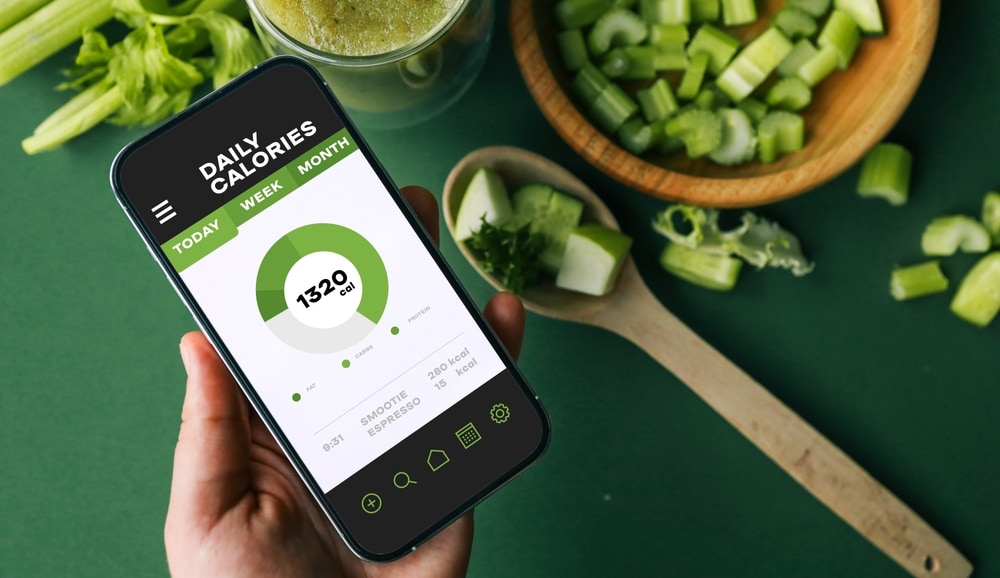Keeping a food journal is a daunting task. Every time you put something in your mouth you have to enter it into your phone? That sounds like a royal pain in the ass.
Fortunately, the right tools make food logging so quick and easy that it becomes second nature.
I tried a handful of apps to figure out the best and worst. These were my favorites (and almost-favorites).
Calorie King
Calorie King is one of the best food tracking apps. It’s easy to use, and meal entry is quick and accurate.
Pros
- The best food database. By Far. It has everything. The standardized “official” versions of all foods. The obscure vegetables you buy at the farmer’s market. That thing you just ordered at TGI Fridays. It’s all there.
- The fastest/easiest to input foods. This is what to look for in a food tracking app. Entry needs to be easy and accurate. All items can be entered in grams or ounces, plus many other item-specific measurements (“One large banana”). Calorie King has the most flexibility in this area.
- No email or login required. Just open the app and start using it. (UPDATE: They recently added a login option. You can skip it, but login is required to use the barcode scanner.)
- You can set four at-a-glance nutrients to display. So if you want to track your fiber, sodium, cholesterol, etc, you can do it easily.
Cons
- It doesn’t let you set macronutrient targets. Only total calories. If you have your macro targets memorized, fine. If you want to see them in the app, you’re outta luck.
- No syncing to website or desktop version. It’s all on your phone. Even with the iPad app or a web account, you can’t sync.
- iPhone only…no Android. Obviously, this is a deal breaker for some.
MyFitnessPal
MyFitnessPal has tons of features, a massive food database, and simple food entry. It learns your habits and combinations, so logging meals becomes second nature.
The app works best when you go Premium. You can set detailed macro targets, set different goals for different days/meals (i.e. carb cycling), customize your dashboard, and integrate your workout calories. And it’s ad-free.
Pros
- Beautiful, sleek, smart interface. Easy to read, and navigate and enter your meals.
- Strong social emphasis with a huge user base. Allows you to connect with other users for support and encouragement.
- One account synced across multiple devices/web. Enter food whenever, wherever. You don’t have to rely on your phone to get it done.
- Lots of workout and fitness features built in. It’s designed to be a one-stop exercise and nutrition tracker, and it does a great job overall.
Cons
- The food database is cluttered. Many foods in the database have wrong information, are misspelled, or have multiple, conflicting entries. Much of the food info comes from other users, and the info isn’t validated. (UPDATE: Stick to “verified” food entries and you should be fine.)
- Macronutrient target setting is limited in the free version. You can only set targets within 5% of total calories. Some body comp goals require more precision, especially at higher calories.
- The best features will cost you money. The premium version is expensive: $10/month or $50/year. If you’re committed to tracking your progress, it’s worth it.
My Macros+
It’s not perfect, but MyMacros+ is solid. This app was built with the flexible dieting/IIFYM crowd in mind.
But it has fatal flaws. If the developers would fix a few problems — or if you barcode scan evvvvvvvverythying you eat — it could be one of the best tools in your arsenal.
Pros
- Designed by people who lift weights and want a real IIFYM-style macro tracker. This is the real strength of this app. It’s not put together by clinical dietitians who have never set foot in a weight room.
- Allows for detailed nutrition targets and multiple target sets. If you’re calorie/carb cycling or just want different macro totals for different days, MM+ does a great job.
- Optional pro account unlocks additional features. For $3/month, you can backup/sync your data, unlock additional features, and follow other users for motivation and support. (I tried a pro account, didn’t really use the extras features.)
Cons
- Somewhat clunky interface. You get used to it after a while, but it could be smoother.
- Finding foods can be difficult. Many common foods don’t come up when you search for them. Type “banana” into the search field, and it shows no results. But when you dig into an alphabetical list of fruits, there it is.
- The units don’t reflect how people eat. After you find your banana on the list, the only unit available is cups of mashed banana. No ounces, no grams, no large/medium/small option. It’s just not useful. I don’t know any adults who eat cups of mashed banana.
The bottom line
If you’re willing to pay for premium, MyFitnessPal is the best choice. It has the best features, and just enough charts, graphs and stats to keep you in the know (without overwhelming you).
If you want fast and free — and you don’t need to set macronutrient targets in the app — go with Calorie King. It’s fast, simple and reliable.
